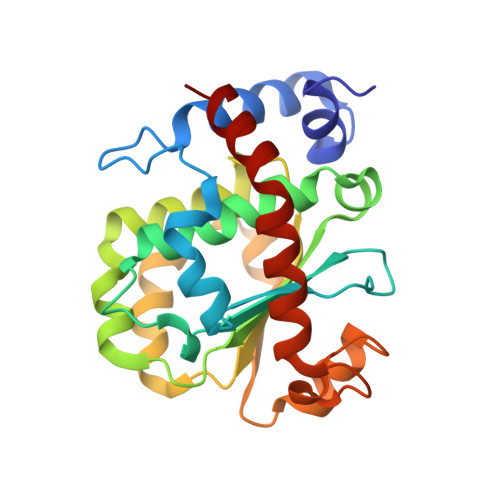Engineering of a functional gamma-tocopherol transfer protein.
Aeschimann, W., Kammer, S., Staats, S., Schneider, P., Schneider, G., Rimbach, G., Cascella, M., Stocker, A.(2020) Redox Biol 38: 101773-101773
- PubMed: 33197771
- DOI: https://doi.org/10.1016/j.redox.2020.101773
- Primary Citation of Related Structures:
6ZPD - PubMed Abstract:
α-tocopherol transfer protein (TTP) was previously reported to self-aggregate into 24-meric spheres (α-TTP S ) and to possess transcytotic potency across mono-layers of human umbilical vein endothelial cells (HUVECs). In this work, we describe the characterisation of a functional TTP variant with its vitamer selectivity shifted towards γ-tocopherol. The shift was obtained by introducing an alanine to leucine substitution into the substrate-binding pocket at position 156 through site directed mutagenesis. We report here the X-ray crystal structure of the γ-tocopherol specific particle (γ-TTP S ) at 2.24 Å resolution. γ-TTP S features full functionality compared to its α-tocopherol specific parent including self-aggregation potency and transcytotic activity in trans-well experiments using primary HUVEC cells. The impact of the A156L mutation on TTP function is quantified in vitro by measuring the affinity towards γ-tocopherol through micro-differential scanning calorimetry and by determining its ligand-transfer activity. Finally, cell culture experiments using adherently grown HUVEC cells indicate that the protomers of γ-TTP, in contrast to α-TTP, do not counteract cytokine-mediated inflammation at a transcriptional level. Our results suggest that the A156L substitution in TTP is fully functional and has the potential to pave the way for further experiments towards the understanding of α-tocopherol homeostasis in humans.
Organizational Affiliation:
University of Bern, Department of Chemistry and Biochemistry, Bern, 3012, Switzerland.


















